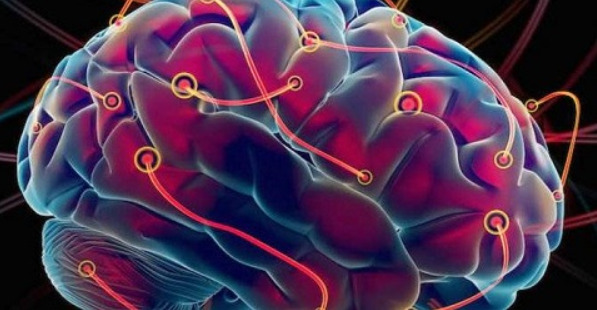Meta-Analysis of CBD’s Effectiveness in Epilepsy Treatment
Activists, consumers, and supporters of cannabis reform around the world all too often hear the phrase “Insufficient evidence” from various national governments as a reason to reject proposals related to the liberalization of therapeutic or recreational cannabis. Of course, this phrase is nothing more than a convenient excuse for politicians to maintain the status quo, continue imprisoning citizens for cannabis use or possession, and deny millions of seriously ill people access to the only effective medicine available to them—cannabis. Clearly, despite progress in reform at both national and global levels, real change is impossible without the evidence of safety and efficacy in treating specific conditions that authorities demand.
Realizing that the authorities in their home country of Brazil were not ready to move forward with cannabis reform—specifically, the legalization of certain non-psychoactive forms of the plant for treating several forms of childhood epilepsy that do not respond to other medications—Dr. Fabricio Pamplona, along with colleagues Dr. Lorenzo Rodim da Silva and Dr. Ana Carolina Coan, decided to independently provide the government with evidence of the high effectiveness of cannabinoids in treating these diseases.
This evidence came in the form of a meta-analysis (a cross-analysis of results and data from previously published scientific studies) on the use of various forms of cannabis in treating severe forms of childhood epilepsy. Published by Pamplona and colleagues in September 2018, the study analyzed 11 individual studies and included a detailed comparison of the effects of different types of cannabis extracts and isolated cannabinoids in terms of their overall effectiveness in treating three forms of childhood epilepsy: Dravet syndrome, Lennox-Gastaut syndrome, and CDKL5 deficiency disorder (also known as Rett syndrome). The sample included 670 patients diagnosed with these conditions.
In addition to comparing the effectiveness of different extracts—including the specialized anti-epileptic drug Epidiolex—the study also described the methods and duration of treatment, dosages used, and the average concentration of active cannabinoids in the products. Pamplona’s team did all this to clearly demonstrate to skeptics in the Brazilian government, as well as other political opponents of medical cannabis legalization, that cannabis is indeed an effective and proven therapeutic tool. In other words, it would be difficult to provide more precise and detailed evidence of cannabis’s therapeutic properties.
They Work!
According to the data presented in the study, 71% of patients who used whole-plant cannabis extracts (containing all natural compounds from the plant) reported a reduction in the frequency and severity of epilepsy symptoms. In comparison, only 46% of patients who used isolated, synthetic cannabinoids experienced similar effects, indicating a higher therapeutic effectiveness of natural cannabis oil extracts over isolated products. These results are especially promising considering that all participants in both groups had a long history of unsuccessful attempts to treat their conditions with various pharmaceutical drugs.
Beyond these general numbers, the authors also divided individual patient feedback into several groups based on the percentage reduction in seizure frequency and severity by the end of the observation period. The first group included patients who showed a 50% improvement in overall health. The second and third groups included those who experienced a 70% reduction in symptoms and those who achieved complete remission of symptoms for more than six months, respectively.
More specifically, after analyzing the feedback, about 40% of both groups—those using natural cannabis extracts and those using isolated extracts—fell into the first category, experiencing at least a 50% improvement in overall health. Similarly, about a quarter of both groups experienced more than a 70% improvement, and roughly one in ten patients in both groups achieved complete remission of epilepsy symptoms. Overall, the results show that both natural cannabinoid mixtures and isolated extracts were almost equally effective in treating these forms of epilepsy.
More with Less
Despite the nearly identical therapeutic effectiveness of natural and isolated cannabis extracts, a deeper analysis of participant feedback and notes from project supervisors revealed some differences in how the two types of mixtures work and their overall effects. The first notable difference was in the average dosage required. On average, patients using isolated extracts needed about 25.3 milligrams per kilogram of body weight per day to achieve a stable therapeutic effect. In contrast, those using whole-plant extracts achieved the same effect with only about 6 milligrams per day, indicating a significantly higher therapeutic efficiency for extracts containing a mixture of cannabinoids and volatile compounds. In other words, based on average dosage, natural plant extracts are about four times more potent than isolated CBD extracts.
Additionally, the substances differed significantly in terms of side effects. Isolated CBD extract caused mild side effects such as nausea or drowsiness in about 73% of patients at some stage of the trial. In comparison, the natural product caused similar reactions in only 33% of subjects in the corresponding group.
Overall, these data clearly demonstrate the functional superiority of natural CBD extracts over isolated substances, both in terms of potency per amount used and in the likelihood of negative side effects.
Original author: Adrian Devitt-Lee



